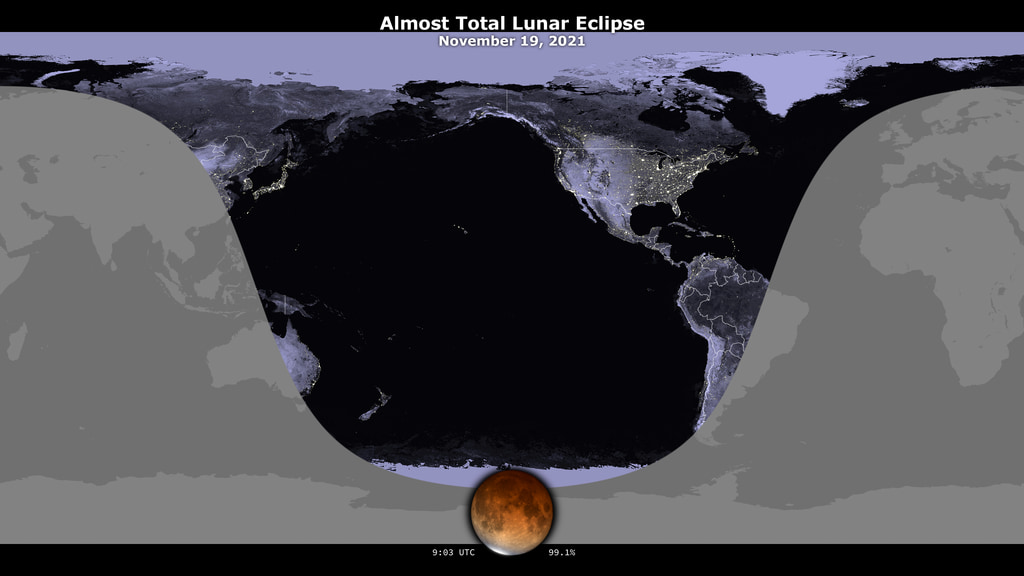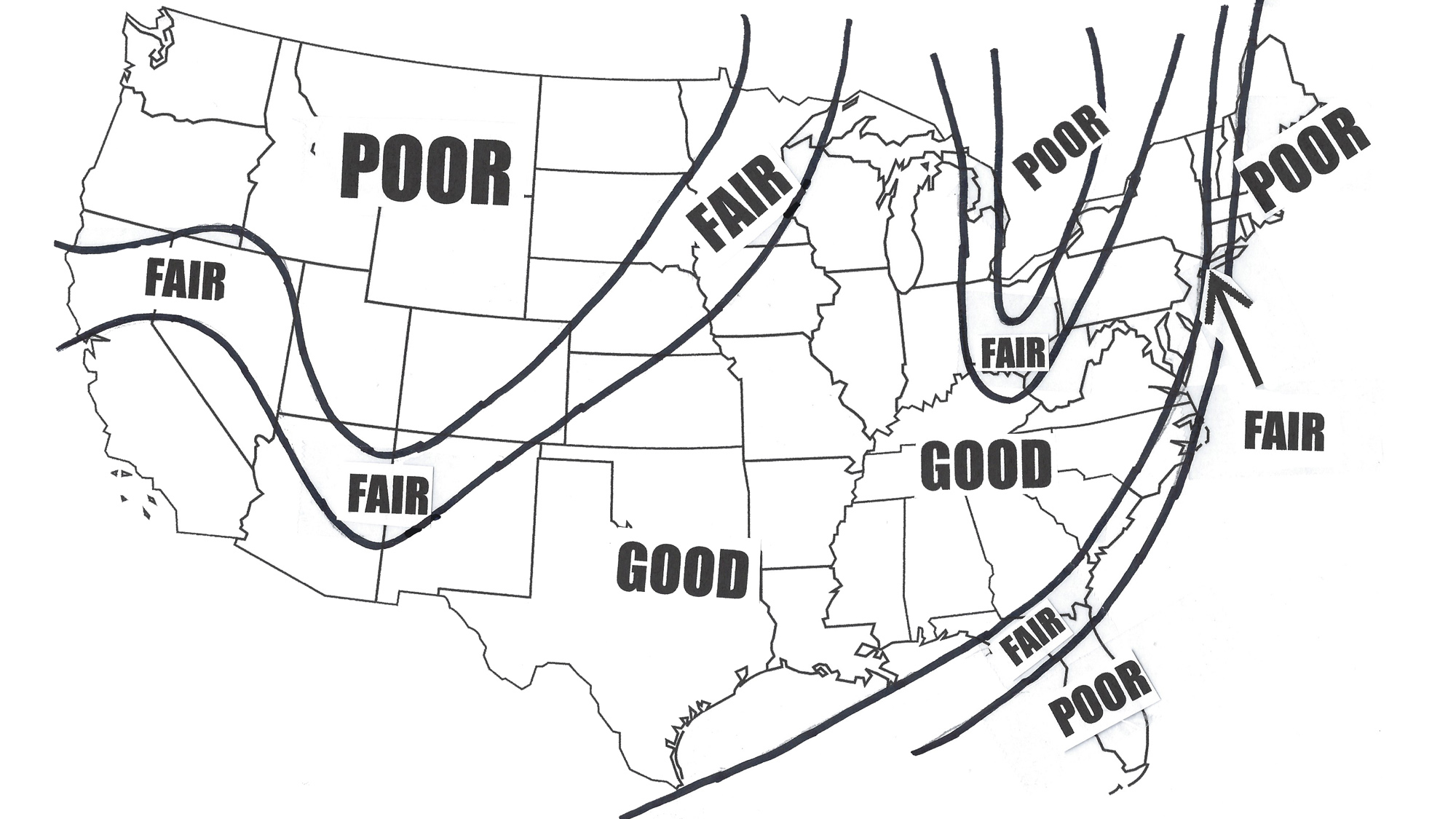Much of the Nation's midsection should be in fine position weatherwise, to get a view of the upcoming "almost" total lunar eclipse scheduled for late Thursday night/early Friday morning (Nov. 18-19). In contrast, sky conditions will be dicey along the Atlantic Seaboard, while across much of the Western U.S., the overall view looks rather muddled due to a rather extensive swath of cloudiness.
First, the good news: A large fair-weather dome of high pressure will be centered over southern Illinois early Friday morning and should bring mostly clear skies for eclipse watchers residing near the western Great Lakes, across the central Great Plains, Texas and Oklahoma, as well as most of the Deep South.
Related: Beaver Moon lunar eclipse 2021: Here's how to watch it online
- What time is the Beaver Moon lunar eclipse?
- How to watch the Beaver Moon eclipse online
- Beaver Moon lunar eclipse 2021: When and how to see it on Nov. 19
For those hoping to get a view of the predawn moon show along the East Coast, much is going to hinge on the strength and speed of a cold front that is expected to move through during Thursday night. The front will likely be accompanied by a band of clouds and showers, which obviously would obscure a view of the eclipse. However, there is a "chance" that drier air could sweep in behind the front accompanied by a gusty west-northwest wind. This might help to push lingering clouds out faster, or at least break up some of those clouds to afford some occasional views of the lunar show.
If your weather cooperates, our guide on how to photograph a lunar eclipse, as well as how to photograph the moon with a camera in general, can help you make the most of the event. If you need imaging equipment, check out our best cameras for astrophotography and best lenses for astrophotography to help prepare for the next eclipse.

The farther inland from the coast you go, the better your chances of seeing the eclipsed moon (maximum eclipse is at 4:02 a.m. EST, when more than 97% of the moon's disk will lie inside the Earth's dark central shadow).
Over the Southeast coastal region, cloudiness may interfere at times for the eastern Carolinas as well as for southeast Georgia. So far as the Florida Peninsula is concerned, it looks like clouds will unfortunately prevail for many, although — with guarded optimism — there's a possibility that northern Florida and the Panhandle area may see no worse than partial cloudiness.
Get the Space.com Newsletter
Breaking space news, the latest updates on rocket launches, skywatching events and more!
Over the eastern Great Lakes and for parts of the northern Ohio Valley, an upper-level disturbance sweeping eastward, could generate partly to mostly cloudy skies.
Finally, for the Pacific Northwest, Rocky Mountain and Northern Plains states, two storms: one moving inland from the Pacific into northern California and the other over Colorado, will create a wide swath of considerably cloudy skies, which will probably hide much of the eclipse. Generally fair skies, however, are expected over central and southern California as well as southern Arizona and southern and eastern New Mexico.
Examine our map which shows the chances of clear skies for the eclipse, graded on a three-point scale: Good, Fair and Poor.

Of course, we stress that our National Outlook is only a generalization — a "broad-brush look" at sky conditions from coast to coast. For a more detailed and localized outlook, we suggest checking the latest updated forecast from your local National Weather Service office. Click here to go to the NWS organization page and find what region you are located in (i.e., Central, Eastern, Southern, Western) and then find your state and which forecast office covers your particular area.
We wish one and all good luck, and clear skies!
Editor's Note: If you snap an amazing night sky picture and would like to share it with Space.com's readers, send your photos, comments, and your name and location to spacephotos@space.com.
Joe Rao serves as an instructor and guest lecturer at New York's Hayden Planetarium. He writes about astronomy for Natural History magazine, the Farmers' Almanac and other publications. Follow us on Twitter @Spacedotcom and on Facebook.
Join our Space Forums to keep talking space on the latest missions, night sky and more! And if you have a news tip, correction or comment, let us know at: community@space.com.

Joe Rao is Space.com's skywatching columnist, as well as a veteran meteorologist and eclipse chaser who also serves as an instructor and guest lecturer at New York's Hayden Planetarium. He writes about astronomy for Natural History magazine, Sky & Telescope and other publications. Joe is an 8-time Emmy-nominated meteorologist who served the Putnam Valley region of New York for over 21 years. You can find him on Twitter and YouTube tracking lunar and solar eclipses, meteor showers and more. To find out Joe's latest project, visit him on Twitter.









